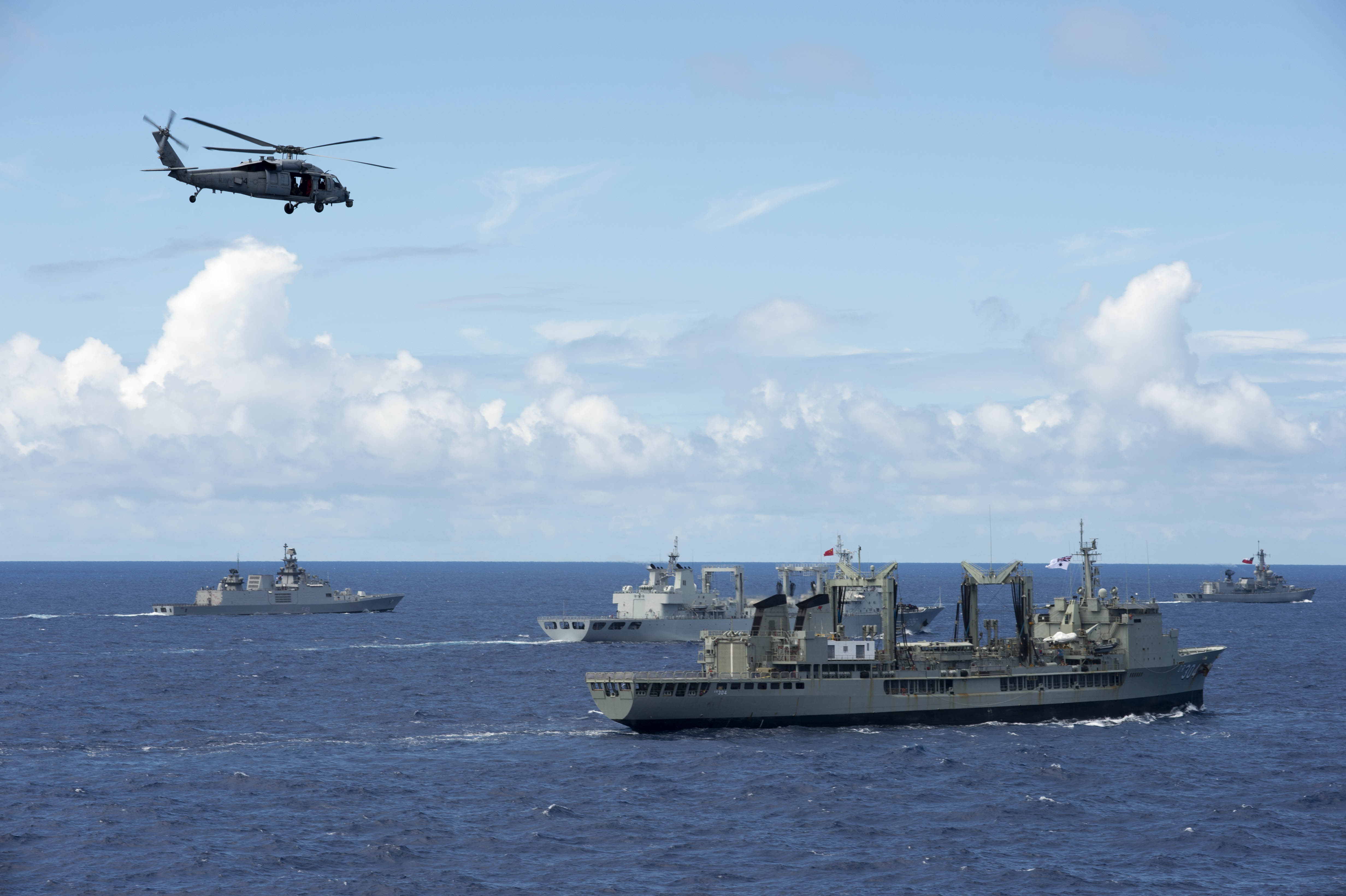
This article has been updated to include information on a memo from Navy Secretary Ray Mabus dealing with wargaming in the Navy and Marine Corps, as well as a clarification of the Navy and Marine Corps roles in organizing this summer’s events.
MARINE CORPS BASE QUANTICO, Va. – The U.S. Pacific Fleet will host an amphibious operations exercise this month in conjunction with a U.S. Marine Forces Pacific-sponsored conference and tabletop exercise for more than 30 Pacific countries.
The U.S. Pacific Command (PACOM) Amphibious Leaders Symposium (PALS) and the larger Culebra Koa exercise in Hawaii will take place in mid-May and will begin a discussion about how to address international crises more cooperatively, Lt. Col. Greg Wardman, ground combat element planner for the Marines’ Ellis Group, told USNI News in an April 24 interview.
Currently, he said, each country that shows up to respond to a disaster is given a task, and countries stay in their lanes and work alone to accomplish their tasks. What military leadership is hoping to see is a more collaborative response, in which countries work together – in whatever combination of multinational people and platforms can best get the job done – to leverage all parties’ strengths.
The Ellis Group, the office created by the Marines in 2011 to integrate naval forces, is still finalizing the tabletop exercise for PALS, but Wardman said the scenario would revolve around a typhoon in a country that had been relatively politically stable but found that a group was trying to take advantage of the chaos and take control of local areas. The mission therefore includes humanitarian assistance and supporting the local government as it tries to retain full control of its land.
More than 30 countries registered to attend the symposium, he said, and those countries’ militaries represent a diverse mix of size and capability.
“Not all of them are going to be able to bring an LPD or an LPH or an LHA to the show,” Wardman said.
“So it’s really more about, there are a lot of capability gaps that we’ve identified within the naval service that potentially some of these smaller nations, they’re ideally suited for that because that’s what they focus on. So it’s a function of, if you’ve got a niche capability that I don’t have a whole lot of capacity for, then how do we coordinate our activities so that we work for each other’s mutual benefit?”
Wardman mentioned riverine capabilities as an example. The U.S. Navy’s riverine force is small right now, but countries like Tonga and Indonesia rely on their riverine forces to protect their shores.
The benefit of leveraging these countries’ riverine forces goes beyond avoiding the cost of transporting U.S. riverine forces to the area and operating them in the event of a disaster in the Pacific. More importantly, Wardman said, the countries that rely on riverine forces deal with an entirely different problem set than the U.S. Navy and Marine Corps chooses to focus on, and therefore may have ideas for how to operate the force that American military leadership wouldn’t even think of.
“We tend to focus on the big things because we have big ships,” he said.
“And we kind of wish away a lot of … mission sets that we’re not necessarily that well suited for.”
By bringing in so many countries to the inaugural PALS event, Wardman said the American naval forces may open the aperture for what kinds of issues should be addressed in future multinational live exercises such as the Rim of the Pacific.
In addition to preparing for the first-ever PALS, the Ellis Group has been busy sponsoring wargames to help address nagging issues the Navy-Marine Corps team faces during amphibious operations, including communications and cyber. Wardman said the Ellis Group has taken a set of four annual wargames and given them the same scenario but with a different operational focus.
Expeditionary Warrior 15 wrapped up in February, and Wardman said that exercise sought to look at how to set the conditions for an amphibious assault. The Ellis Group was looking for gaps in materiel, doctrine, training or capacity.
The group is preparing for the upcoming Operational Reach 15, which has the “same scenario, same landing plan, same thing, but what they’re going to focus on is the ability to sustain that force and all of the logistics required to conduct that operation,” Wardman said.
Ground Warrior 15 is tentatively scheduled for August and will use the same scenario to dive into how the ground force should operate. And a joint irregular warfare exercise will take the same scenario but explore how actions in Phase 0 conditions could have avoided conflict or set the conditions for an easier response when conflict erupted.
The idea of this series of wargames is to further explore problems in larger exercises and predeployment training to find a solution.
“From a naval perspective, every wargame and exercise we conduct as a naval service, these are always problems that come up. So if we see this in Bold Alligator 14, Ssang Yong 14, RIMPAC 14, Dawn Blitz 14, you may want to take a look at how we do that better and see if we can identify where that breakdown occurs and then how to fix it,” he said.
This iterative wargaming strategy exemplifies what Navy Secretary Ray Mabus hopes to see from the Navy and Marine Corps going forward. The secretary signed a memo on May 5 asking for “a series of smaller, iterative analytic games in [Fiscal Year] 2016-17 to better inform naval strategy development, campaign analyses, and fleet experimentation.” The memo notes that wargaming needs to include emerging technology, modeling techniques and data analytics, and it ought to influence the budgeting process.





